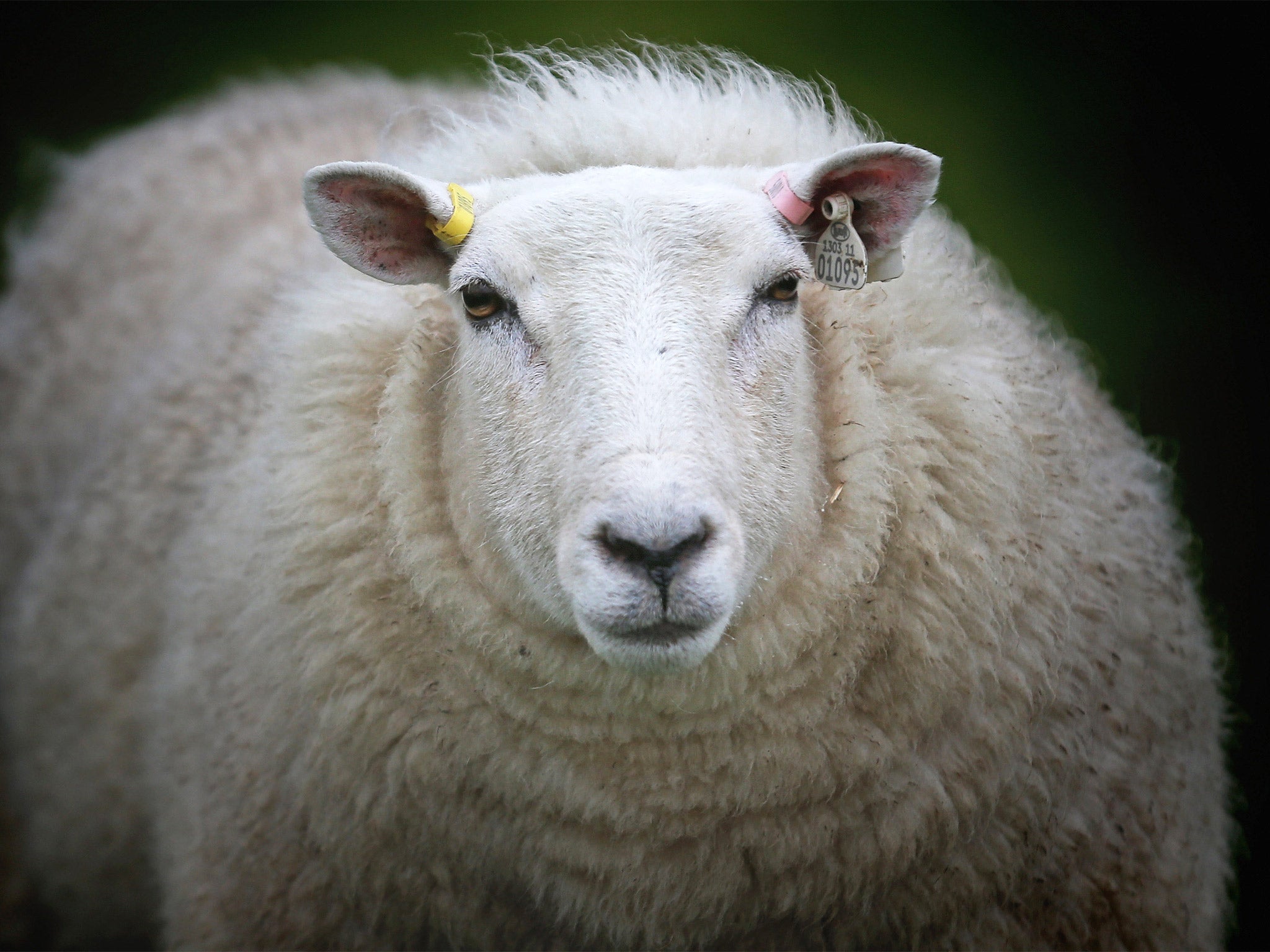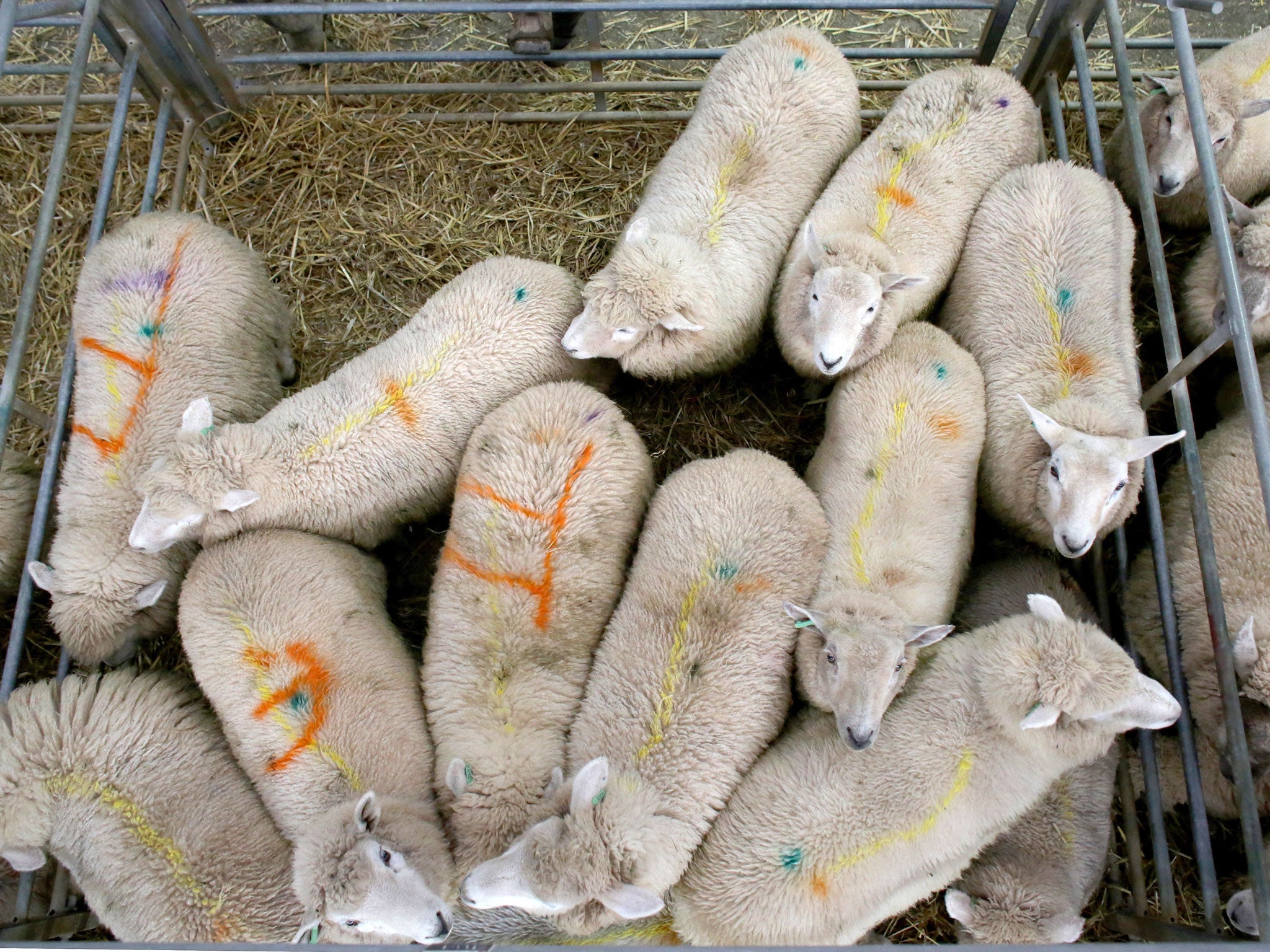Sheep rustling: Police are studying ancient methods of identification to help beat the thieves
British farmers are fleeced of 80,000 sheep every year, as David Barnett reports

Pity the poor country coppers – if you thought they had enough on their plates with red diesel, dogging and bored teenagers necking horse tranquillisers, now they're having to get to grips with sheep markings designed by the Vikings.
You might think rustling is something consigned to old episodes of Bonanza on daytime satellite TV, but around 80,000 head of sheep get pinched every year in the UK from our hard-pressed farmers. And it's no laughing matter, as North Yorkshire's Police and Crime Commissioner, Julia Mulligan, says: "If £40,000 worth of jewellery is stolen from the front of a jeweller's shop, people know instantly what that means. If £40,000 worth of sheep go, people sometimes have a bit of a titter and think it's funny. But it's not. It can be the farmer's entire life's work."
She has sent her officers in the Yorkshire Dales to learn from the farmers how sheep from different flocks can be identified and recovered once they've been stolen. And that means studying the literature – specifically The Shepherd's Guide, an indispensable spotter's handbook to sheep marks.
Although the guide has a no-frills, text-only cover, inside is a cornucopia for sheep fans, with each flock illustrated by a picture of the sheep and its associated markings and notches. (There's possibly a missed trick here, in not marketing it to countryphiles and tourists as an alternative to trainspotting or bird-watching.) Published in revised editions since the early 1800s, it's sub-divided into different British regions, such as Cumbria, where the sheep farmers' poster boy, James Rebanks, plies his trade. Known as the Herdwick Shepherd (because Herdwicks are his sheep of choice), this year Rebanks's new book, The Shepherd's Life, gained him nearly 69,000 followers on Twitter. He is an oracle of matters ovine, and he explains that The Shepherd's Guide is the sheep farmer's bible. "It only comes out every 20 or 30 years or so because the markings hardly ever change," he says. "They stay with the farm for generations, so they're always the same. Some of these markings are 1,000 years old; they were brought over by the Vikings."
So of what, exactly, do they comprise? Should you ever come across a herd of sheep you suspect have been stolen, there are two types to watch out for: smits and lugs. The smit is the daub of colour you'll see on a sheep, and if you thought it was just a random smear of leftover poster paint, think again. They are as different as snowflakes and were passed down in an oral tradition before The Shepherd's Guide was first published by the Martindale farmer Joseph Walker in 1817 to help fellow farmers identify roaming sheep.
Then there are the lugs, which are notches cut into the ear of the sheep. Those Vikings again. "It comes from the Norse word lög, which means law," Rebanks says. And law and ownership is what it's all about. Forget the toy farmyard you had as a child, with neat pens built around a quaint farmhouse. North country, Welsh and Scottish sheep roam over vast areas of unpopulated common land, away from the watchful eye of the farmer (which is why theft is such a problem).

Rebanks says the simplest smits and notches will probably indicate the most venerable farms. "The biggest farmer would have had the first choice of notch and just clipped off a small corner of the ear," he says. "The others would have to come up with more intricate and elaborate designs to distinguish their sheep from the other flocks.
"Think of the smit marks like jockeys' colours in a horse race," he says. Thus, looking at the 1817 edition of The Shepherd's Guide, we can see that James Mattinson's flock will have a red mark "on the back and down both lisks" (yes, Vikings again – lisk is Old Norse for "groin") while James Cragg's will have "pitchfork grains on the far side, and a pop on the near huck" (you can look those up yourself).
And it's a system that works. Just a few days ago Rebanks found a ewe with a mark he didn't recognise, and consulted The Shepherd's Guide. (Tradition decrees that farmers should be notified of found sheep, and if they don't claim them the animals are sold and the money goes to "the commoners".) This one had wandered from Langdale, "a day-and-a-half's walk for a man, let alone a sheep", Rebanks says.
It bodes ill for the rustlers, once the police are up to speed. If sheep can be traced from 40 miles away, the thieves are likely to soon be feeling the long arm of the lög.
Subscribe to Independent Premium to bookmark this article
Want to bookmark your favourite articles and stories to read or reference later? Start your Independent Premium subscription today.
